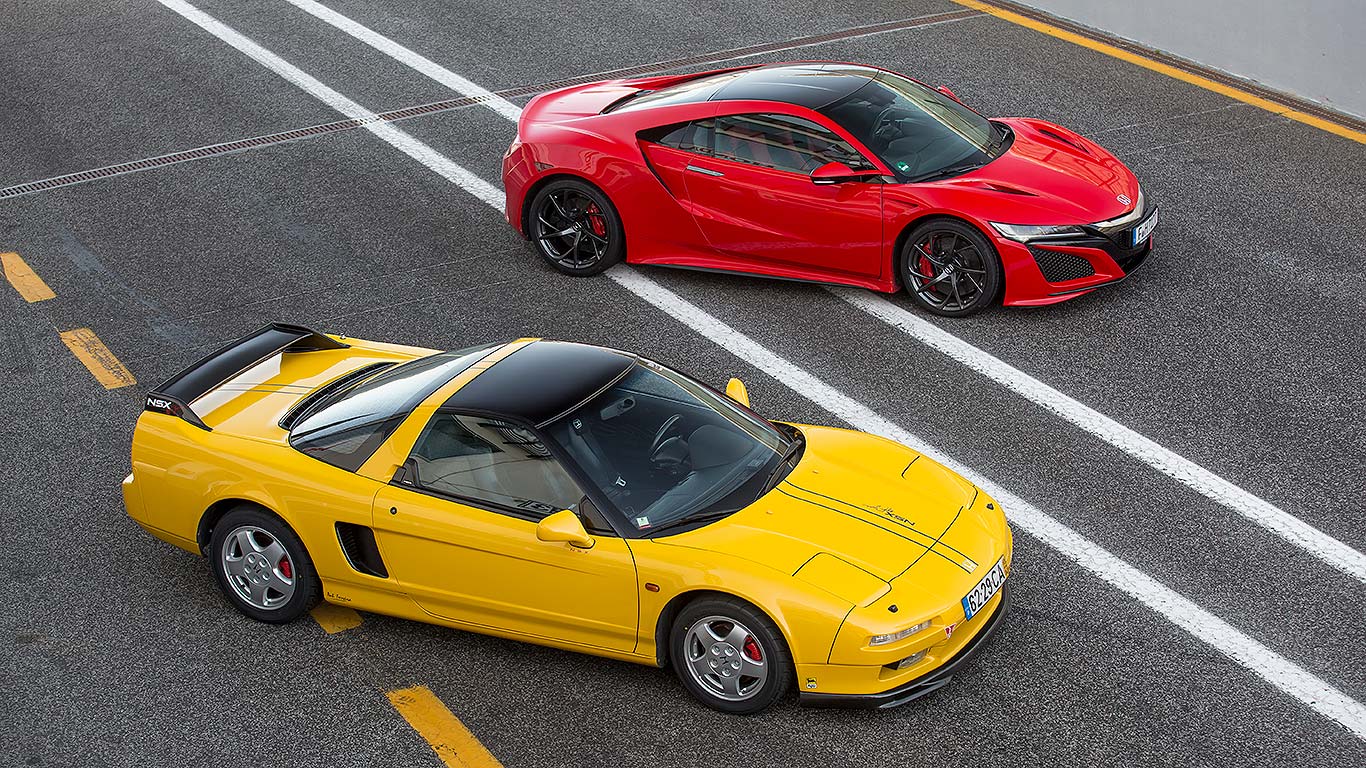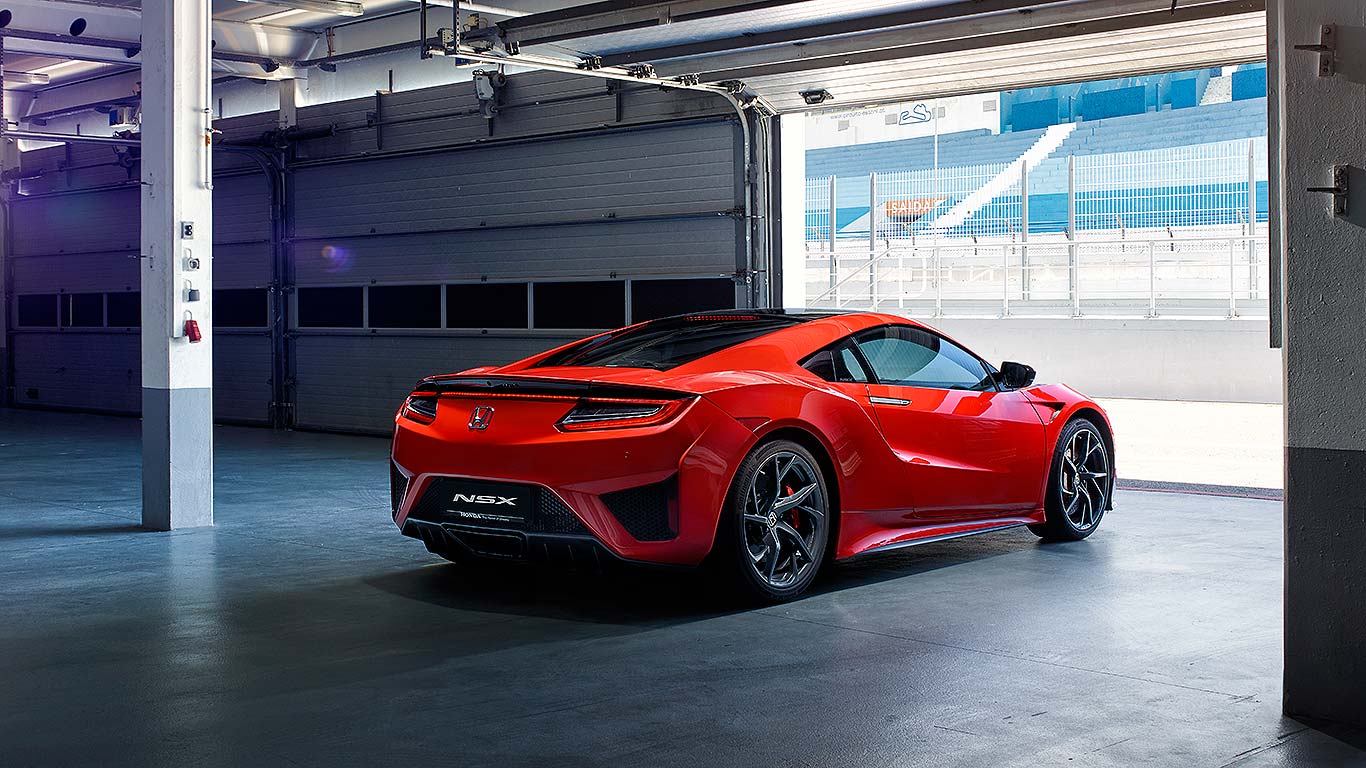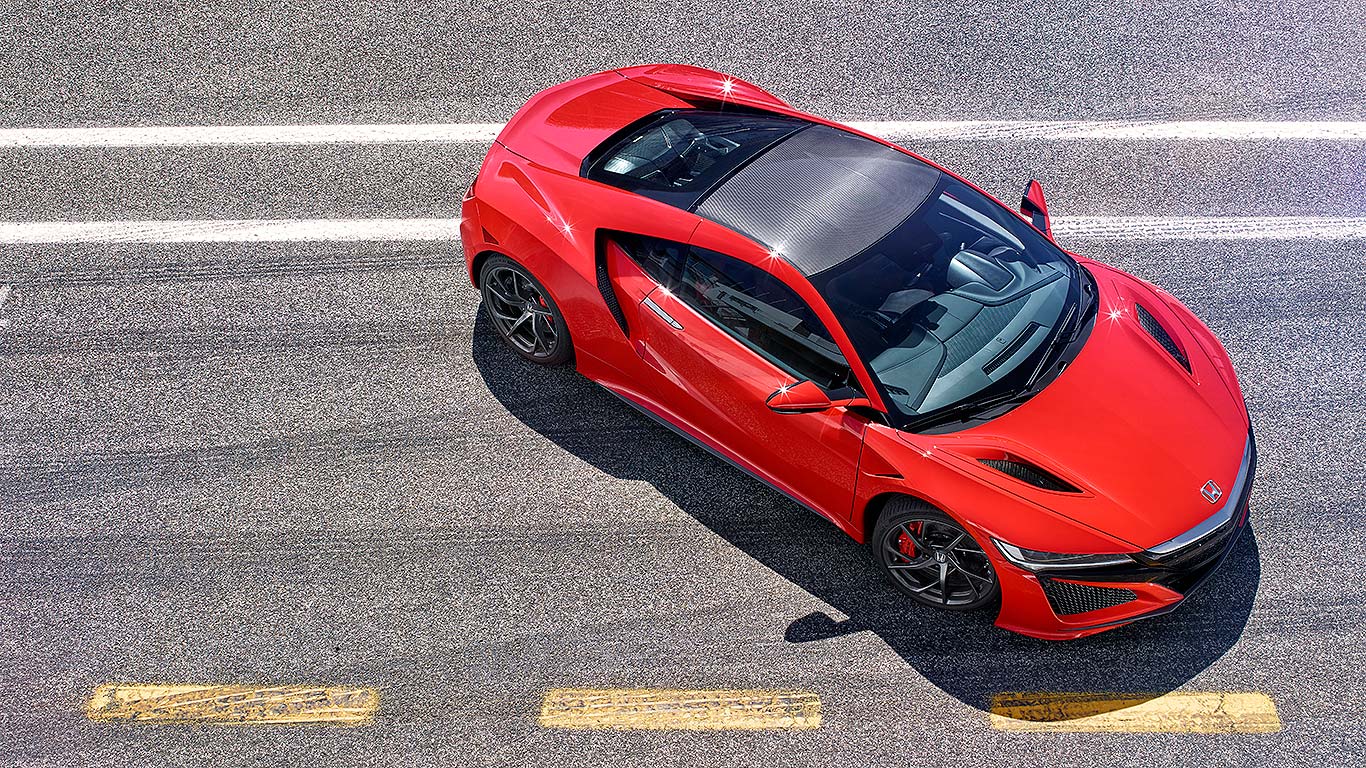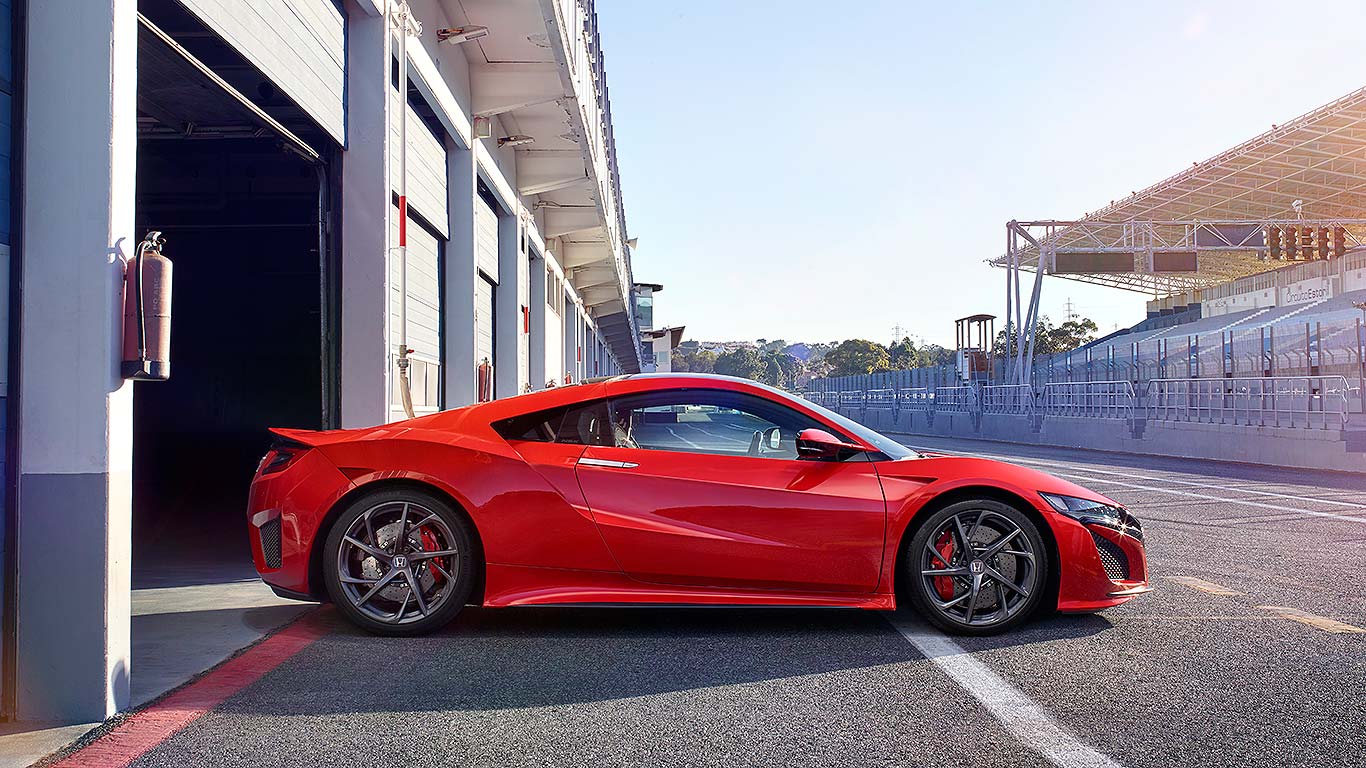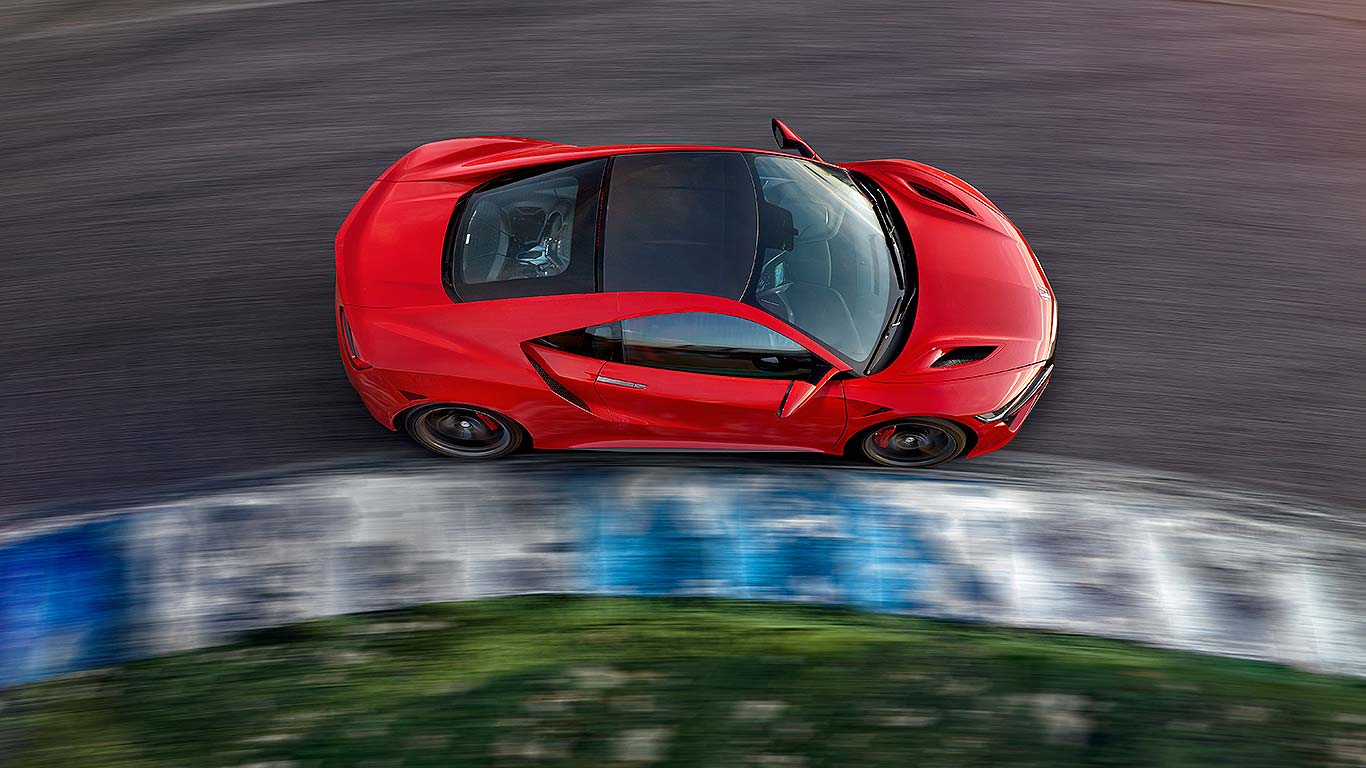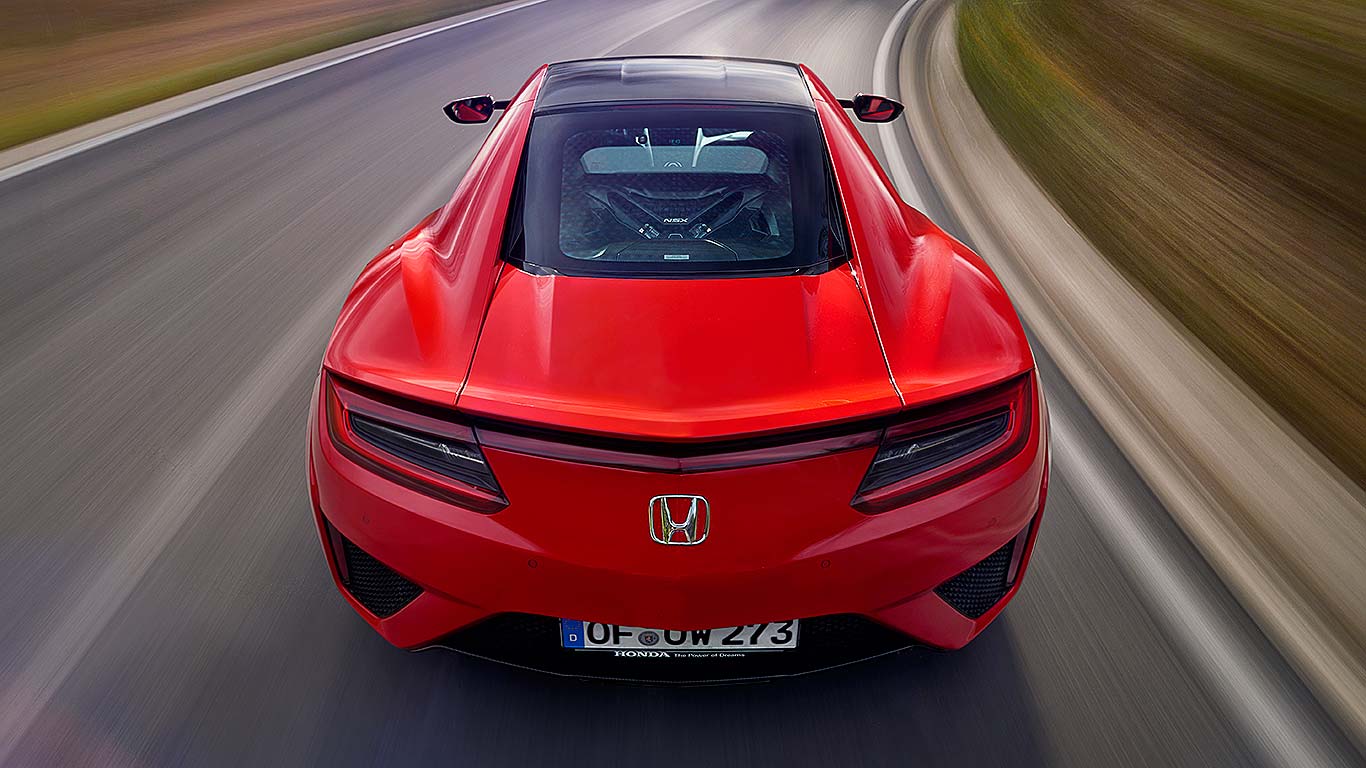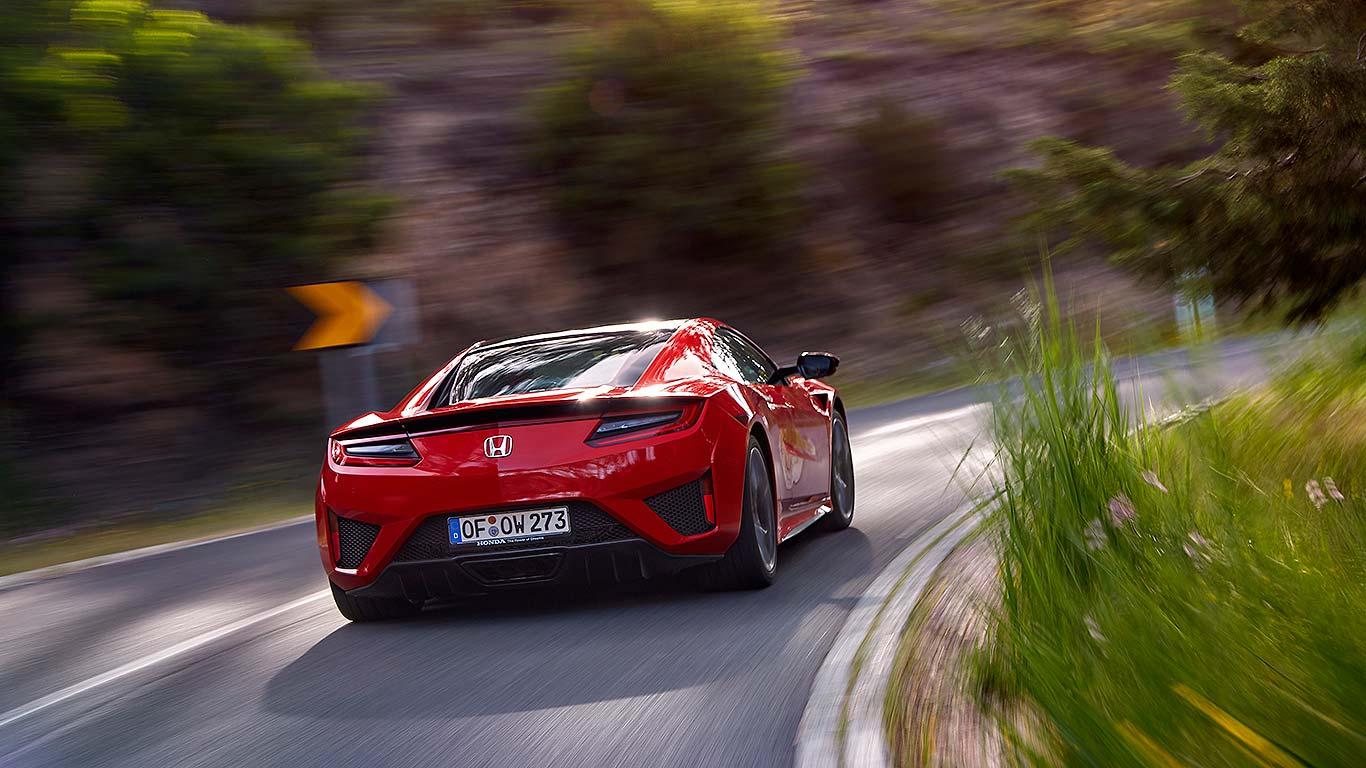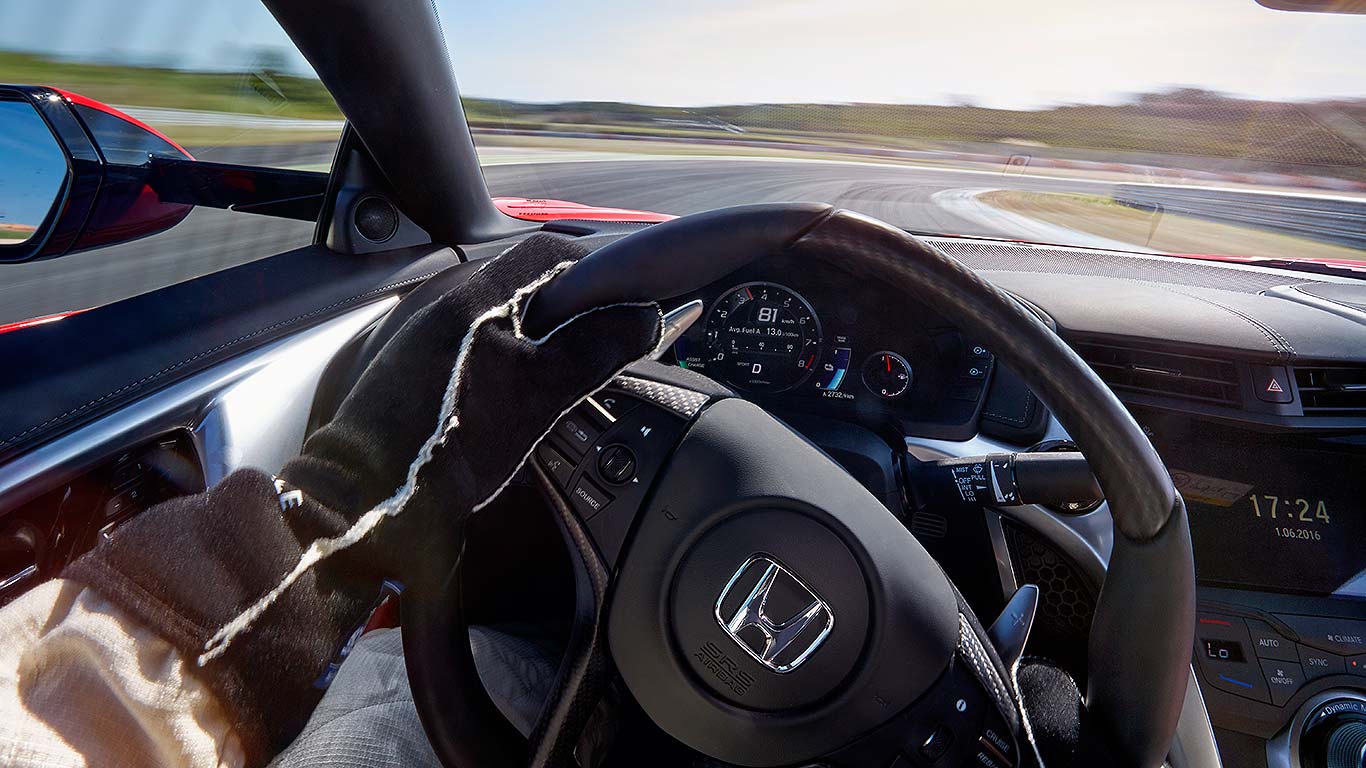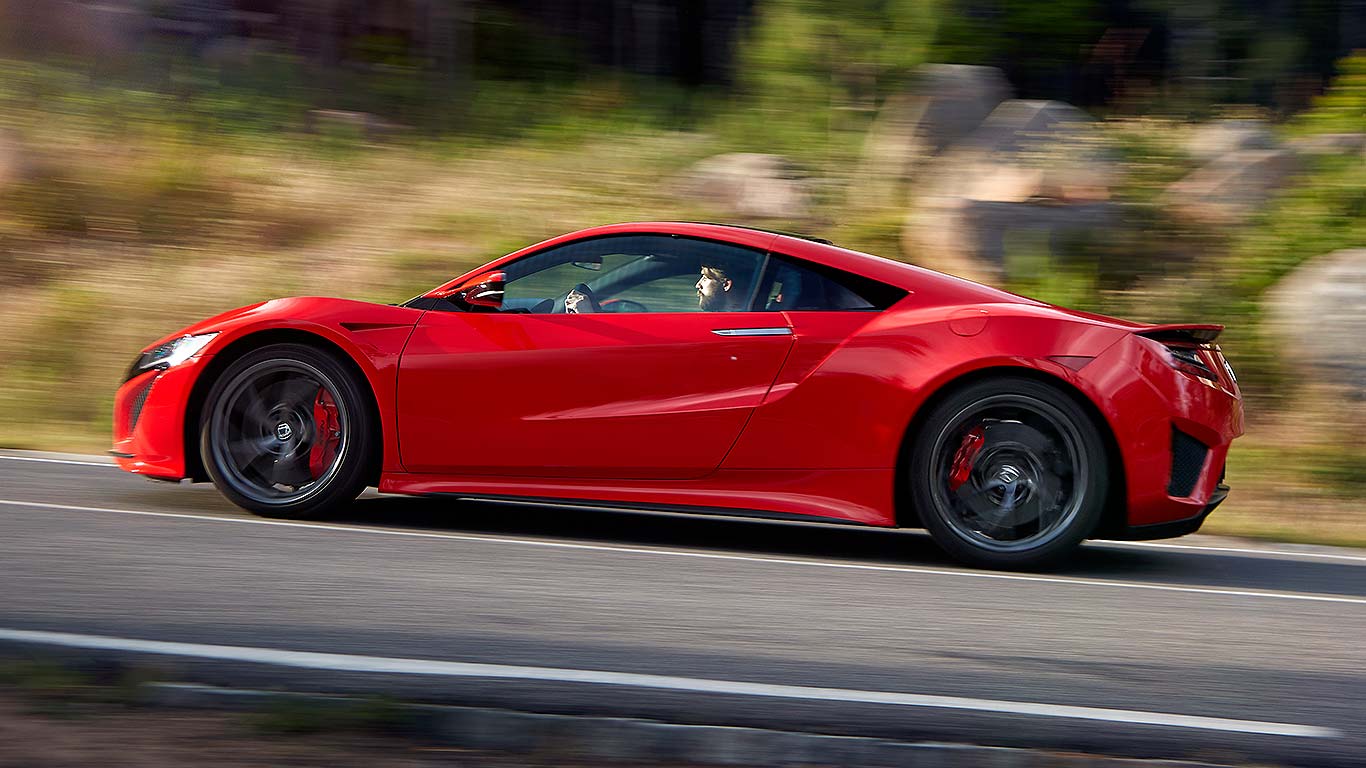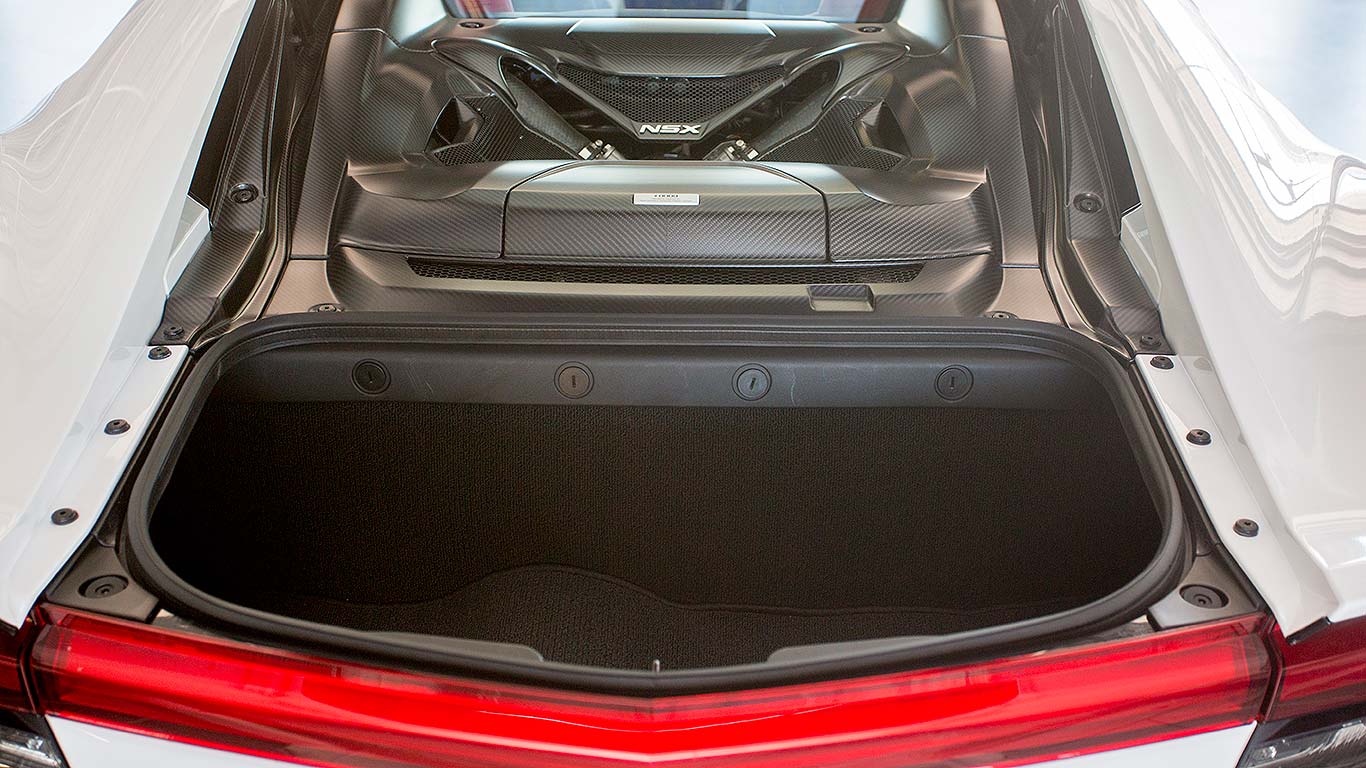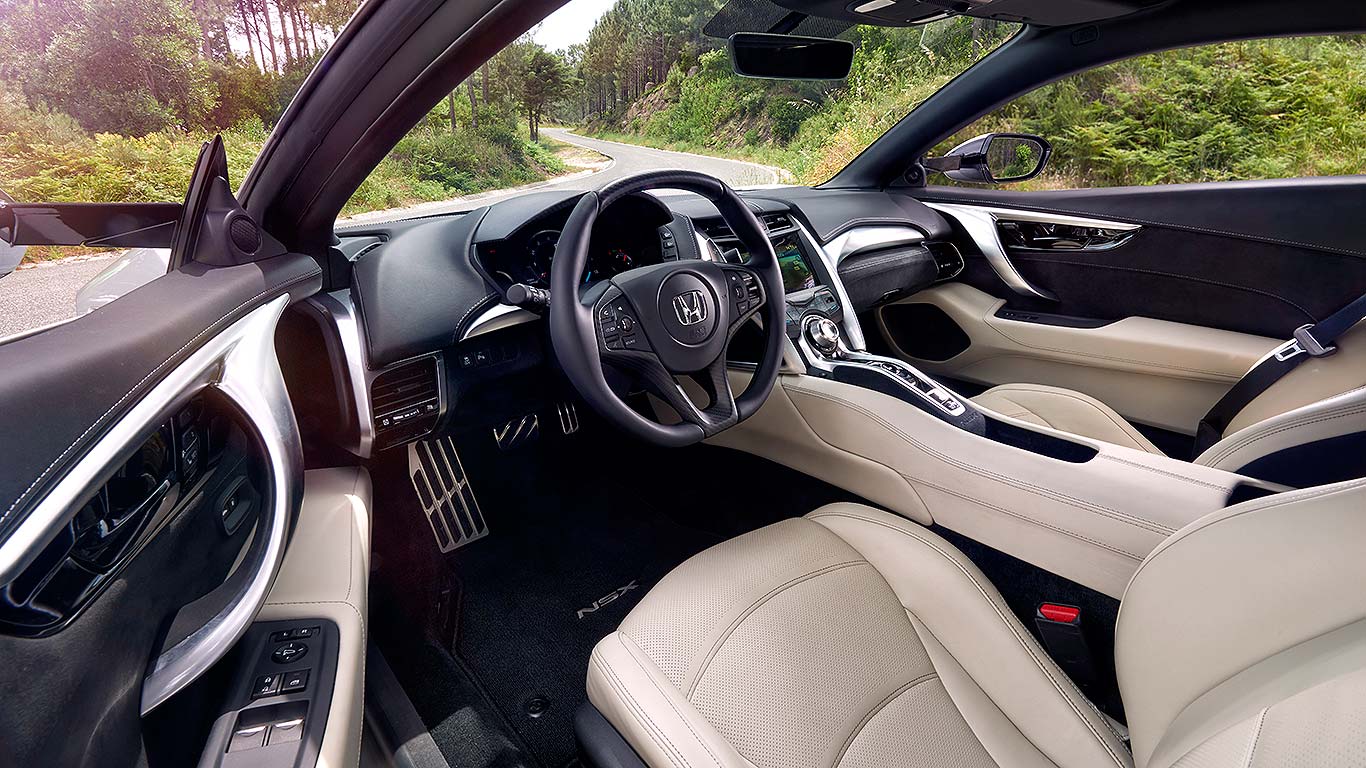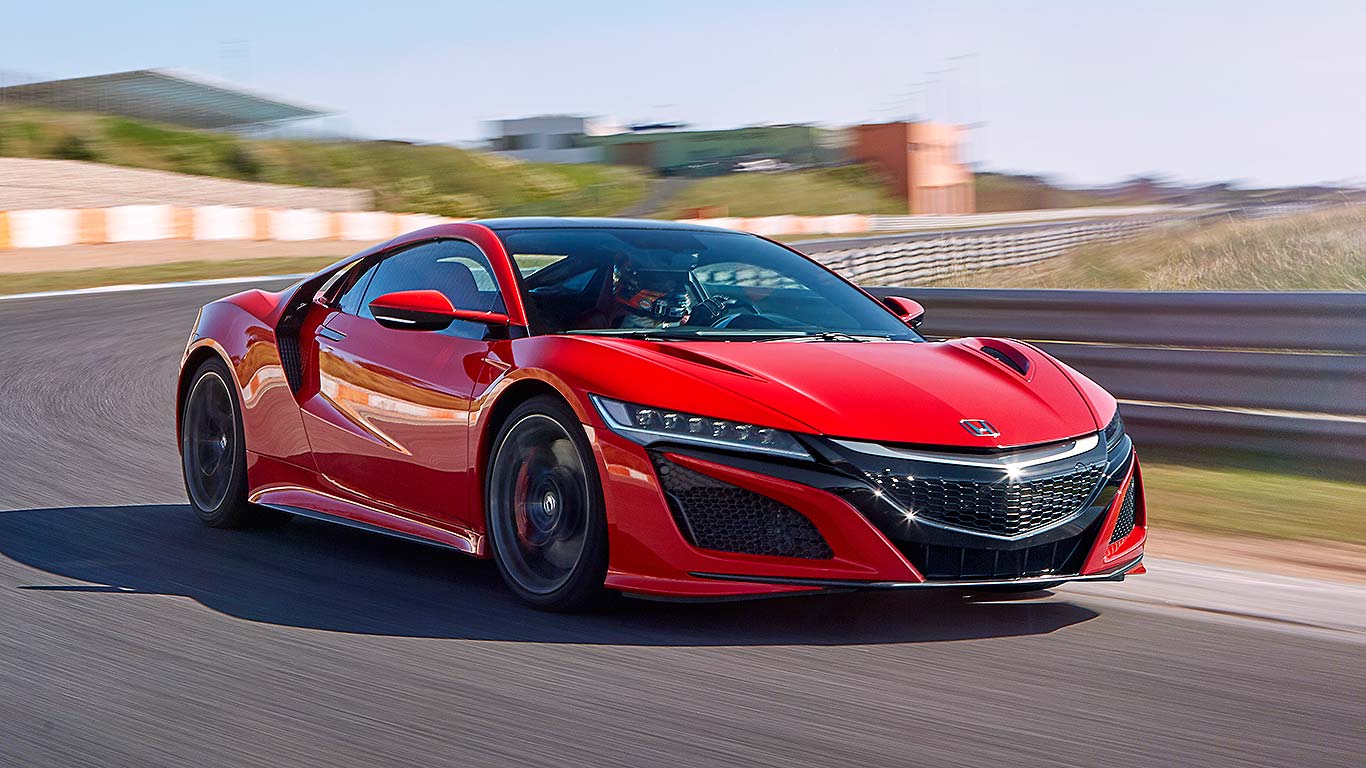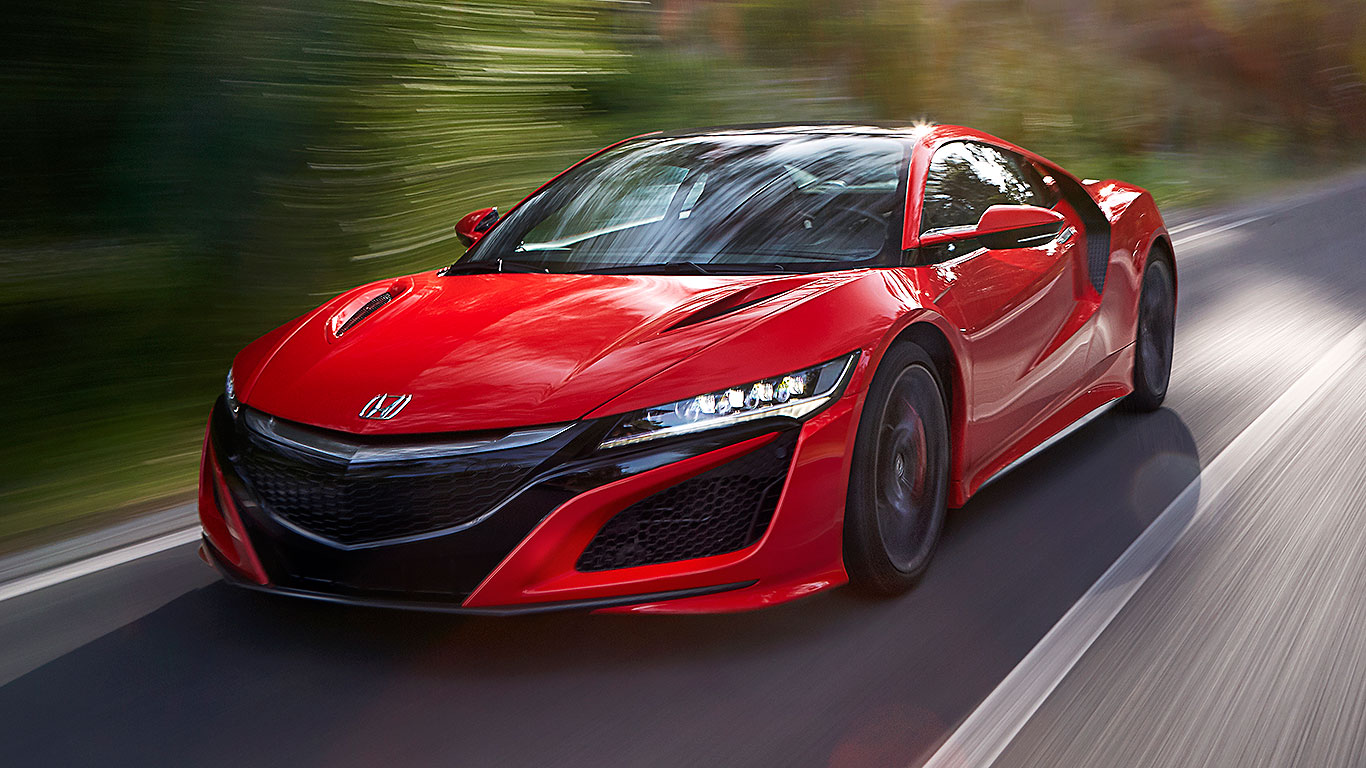 Japanese car companies owned the 1980s. They produced great cars that dominated major markets like the United States. Why stop there, though? For Toyota, it was the Lexus LS400 that socked it to the Mercedes-Benz S-Class. For Honda, it was the NSX that, frankly, made contemporary Ferrari products look old-fashioned and slightly embarrassing. A brilliant clean-sheet design famously approved by Ayrton Senna, it was the sports car that made supercars blush. Now, a quarter-century on, Honda’s revived the NSX name to do the same again.
Japanese car companies owned the 1980s. They produced great cars that dominated major markets like the United States. Why stop there, though? For Toyota, it was the Lexus LS400 that socked it to the Mercedes-Benz S-Class. For Honda, it was the NSX that, frankly, made contemporary Ferrari products look old-fashioned and slightly embarrassing. A brilliant clean-sheet design famously approved by Ayrton Senna, it was the sports car that made supercars blush. Now, a quarter-century on, Honda’s revived the NSX name to do the same again.
What’s more of the same?
NSX means New Sports eXperience. Launched in 1989, the original was a landmark. Ferraris today wouldn’t be so good if it weren’t for the NSX. McLaren F1 designer Gordon Murray was a die-hard fan and admits the NSX was the benchmark when designing McLaren’s icon. What made it so good? Being a fast, dynamic and dramatic supercar – but also offering unheard-of levels of quality, usability and ergonomic intelligence. The supercar world is defined by the NSX: what came before it, and what came after it.
How has this second-generation NSX project come together?
The project was again born in Japan, but this time Honda’s US team have led development, based in Ohio. Ted Klaus has been the man in charge for the project’s four-year development. He’s an active racing driver, a chassis dynamics guru and the most enthusiastic, approachable steely-focused leader you can imagine. He’s the new Mr NSX – and tells us the first Mr NSX said to him “I hope you struggle the way I struggled with the original NSX”. You sense he has; you also sense he’s happy with the solutions his team came up with…
What do we have here then?
Coming four years after the concept NSX, the production version is different in every way, but to all intents the same. A mid-engined two-seater, it has a healthy 581hp – more than any Porsche 911 on sale, more than any McLaren Sports Series model – and like the original in its day, is going in big on tech. It has two turbos, three electric motors and four-wheel drive. So while the £137,950 list price is a lot for a Honda, it’s not a lot for what’s almost certainly the most technologically advanced sports car there’s ever been.
Describe to me how it looks
It looks taut, tight, very much function-first. Like the Audi R8, it’s a sports car with supercar looks. The complex aero design dominates, with the front end dominated by grilles and air intakes and the floating rear C-pillar clothing more air intakes, air filters and air channels. It’s a 3D design, with plenty of depth and carefully-formed detail. Visually, it’s as complex as F1 used to be in the late-noughties. It’s very different to the original NSX but, it seems, no less appealing. On the Portuguese launch roads, it was as much of a traffic-stopper as any new Ferrari.
Very low, very wide: it’s a proper supercar
It’s 1.2 metres tall and looks painted to the road: its stance oozes attitude. When you get in, the sill looks like it’s rubbing on the tarmac (and seats are mounted well inboard). This all means the centre of mass is as low as the Senna-pleasing original. But it’s also wide, much more so than the original. It’s nearly two metres across and way wider still when you factor in the mammoth door mirrors. Question is, will this width count against it on the road?
So, it has a V6 and THREE electric motors. How does that all work?
The drivetrain is fiendishly complicated. Called Sport Hybrid Super Handling All-Wheel Drive (or Sport Hybrid SH-AWD, for a bit less of a mouthful), In the middle is the twin-turbo 3.5-litre V6, rated at 507hp. A 48hp electric motor is directly mounted to it (it works a bit like the original Honda Insight), with twin 37hp motors on the front axle. The middle motor is there to boost the torque holes in the power delivery (and minimise turbo lag) and the front motors both give instant acceleration (it’s these that actually launch the NSX off the line during acceleration) and also, via torque vectoring, help stabilize the car when fast-lapping.
That’s epic complication
It is, but Honda doesn’t want it to feel so. The development goal was to make it the most intuitive hybrid powertrain in the supercar segment. Honda says it first got the base car right before taking it further with the electric tech. The engineers say they’ve tried to take all the artificiality out and use the positives of electric motors – their clean, powerful and instantaneous response – to enhance the driving experience. Certainly on the track, you don’t feel it’s a disconnected e-driver and, as we soon discovered, aspects the sense of positive, planted, surging drive you feel from the front e-motors when you do get it right is glorious.
What’s this about it being an EV?
The NSX is a hybrid, one that offers low-speed electric-only running. It’s bizarre, pulling away as a silent EV, but cool. City users will love the clean-breathing vibes coming their way. It’s considerate with the engine on, too. In Quiet mode (the most relaxed of the four modes, you can also choose Sport, Sport + and Track), exhaust valves are closed most of the time to keep noise levels socially acceptable. It doesn’t even have a starter motor whirr. Just like the Insight, the Direct Drive Motor is used to start the engine, so it just ‘comes on’ when you press the starter.
Go on, pub bragging rights: what’s the 0-62mph time?
Honda seems reluctant to quote an exact 0-62mph time, oddly. It will only say sub-3.0 seconds and that it’s ‘faster’ than a Porsche 911 Turbo. As that does 0-62mph in 2.9 seconds in ultimate Turbo S form, it seems Honda’s betting on 2.8 seconds or better. “It’s down to the magazines to get their own times,” says Klaus. Come back to us later this summer when Honda UK gets its cars (and make do for now with a 191mph top speed, plus that McLaren-beating power figure)…
‘It’s not about numbers, it’s about response time,’ says Honda
Honda’s reluctance to quote a 0-62mph time contrasts with its happiness to talk about the sub-100m/s response time of its electric motors. Good for corners, where eye-blink responses are so crucial. This tells you plenty about what Honda’s tried to achieve here – create an ultra-dynamics sports car that uses its tech to enhance and genuinely electrify the driving experience, allowing it to offer an experience no other rival without all this gadgetry can match.
Come on then: first responses after driving it?
We drove it on track first: straight into the deep end (we later learnt this was intentional, part of Honda’s plan to show off how user-friendly it is). Of course, it’s wildly fast, with the ultra-responsive, gloriously vocal and free-revving engine delivering monster pulling power. But more than that, it’s the confidence you have in the NSX even when pressing on hard on an unfamiliar track with the chief engineer sat next to you (yes, really). I was up to speed within a lap, and beaming by the second from the glorious dynamic display the NSX was putting on. At the end, I was convinced it was a serious sports car, even if I wasn’t quite sure how it had done it…
That complexity again?
It certainly takes time to get under the skin of the new NSX. On track, you learn to brake late, get the nose planted onto the apex and then go hard on the power – the feeling of front-end bite is tremendous, as if the entire front axle has become energised, with the immediate torque steering the rear without ever threatening to spin you like a top. All the mid-engined excitement, none of the drama – once you learn how to use the systems to your advantage, that is.
Is it a similar story on the road?
Road driving quickly reveals the NSX’s excellent agility, high levels of grip and reactivity, its easily-epic speed and the unique lag-reduced acceleration of its mid-mounted engine. It’s straightforward to steer it quickly and neatly on unfamiliar roads and thus easy to trust it, willingly press on harder and discover what a friendly high performance sports car it is. Again, mid-corner bite from the lithe front end is terrific (thank you, torque vectoring), giving confidence to plant the throttle early and then feel that hint of stabilizing, heroic power-oversteer. What other supercars make you feel like so much of a driving god within two hours? Just avoid Sport + mode on the road. Sure, this gives you max thrust from the electric motors, keeping the batteries permanently charged ready to dish out F1-like energy boosts, but it also makes the ride too firm, steering too solid and, critically, the accelerator far too sensitive. Configurable modes are coming, hints Honda…
Crunch time: with all that electronic stuff, does it feel artificial?
The NSX doesn’t feel artificial to this writer. It uses technology to great effect, helping it do things it wouldn’t otherwise be able to do: the driver senses this through glorious, heroic dynamics rather than simply being passengers while an ultra-clever robot car does its thing. Saying that, you have to be mindful of this technology – it will only do its magic if you learn how to exploit its e-drive front end, its instant-response drivetrain, its ultra-grippy chassis. But to me, this isn’t artificial, because it’s giving an experience that’s impossible without this tech, and giving so much driver satisfaction when you get it right. Gripe about artificiality with the initial steering and brake pedal response, not the NSX’s dynamics.
And the engine?
Despite being a hybrid, the V6 engine dominates. It’s the right sort of vocal, with a throaty throb with hints of Porsche 911 thrum to it. There’s a lot of turbo whistle and wastegate chatter (with a cool overlay of electric whine when you lift off) but the yowl of the engine is ever-present, particularly when howling to its 7,500rpm redline. It’s not quite traditional Honda-ultra-high revs, but the engine-centre-stage focus certainly is (it’s all ‘real’ noise too, courtesy of exhaust flaps and sound-channeling pipework into the cabin). It also enhances the hybrid-drive mode: in town, it’s often a surprise to have the engine noise silenced and electric drive take over – not something antisocial sports cars generally do.
What else surprised you?
Honda’s nine-speed dual clutch transmission impresses, proving sufficiently intuitive not to frustrate in auto mode and great fun in paddleshift mode – it’s huge fun going up and down the ultra-close ratios. Brembo brakes are clean and progressive when used hard (well, the optional ceramics I drove on launch were, anyway). I loved the deeply sculpted steering wheel and thought the seats great; they’re heavily bolstered lower down but more open around your shoulders, further enhancing the broad interior’s airy feel. Speaking of which…
What’s the interior like?
It’s intentionally simple inside. Ultra-clear ergonomics, simple buttons and knobs, no plethora of buttons. To adjust the different drive modes, simply turn a big round knob on the dash. The most complex bit is the fully-digital dial pack, which has all sorts of gauges for revs, battery charge, oil temperature and umpteen other things I haven’t quite worked out. It’s a strict two-seater, but it’s perhaps the most user-friendly two-seater on sale.
A user-friendly supercar? Well I’ll be
What made the original NSX so great was its focus on ergonomics (Ferrari and Porsche didn’t know the word existed in the 1980s). This continues that. Forward visibility is superb: the dash is low, windscreen deep and the complex-to-make A-pillars are super-thin for panorama vision (in contrast to rear visibility: the over-shoulder view is awful). Some supercars are about intimidating the driver. Not this. Honda even claims the boot is bigger than it seems: sitting behind the engine, the 100-litre space is extra-wide so will take a full-size golf bag despite having just a third of the capacity of a Ford Fiesta.
Does that user-friendliness extend to the drive?
Here’s the really clever bit about the NSX: it’s sublimely easy to drive, a refined cruiser, ultra-settled and planted at speed, has a smooth ride and, in non-Sport + mode, the most waft-like yet controlled damping of any sports car. Instantaneous engine response gives it diesel-like drivability, the wide cabin is comfortable and high-quality and the agility you feel on twisting roads also offers stress-reducing benefits when navigating unfamiliar dual carriageways, schlepping up the motorway or heading into metropolitan cut ‘n thrust. A 911 has long held claim to be the real-world supercar: the latest NSX is here to steal its crown.
2016 Honda NSX: verdict
The new Honda NSX is a very ‘Honda’ type of supercar and thus an authentic successor to the mighty original. It’s as much of a technological step on as the 1989 car, but this hybrid/electric/computers-laden tech is used to add to the driving dynamics, not take anything away from the driving experience. Certainly, it does things most other more ‘analogue’ sports cars can’t do and is a unique slam-dunk because of this. If the purity of a McLaren 570S or familiarity of a 911 isn’t for you, the space-age NSX may well be.
For
- Astonishing technological achievement
- Driver-enhancing dynamic thrills
- Supercar styling with super-ergonomic interior
Against
- It takes a lot of brainpower to learn all its systems and how to get the best from it
- McLaren won’t be worried by the on-centre steering feel
- Here’s hoping owners put the time in to learn what an epic car the NSX may well be
2016 Honda NSX: specifications
Price: £137,950
Engine: 3.5-litre V6 with Direct Drive Motor and Twin Motor Unit
Gearbox: Nine-speed dual clutch auto
Power: 581hp (system total)
Torque: 476lb ft (system total)
(V6 engine power/torque: 507hp/405lb-ft
Direct Drive Motor power/torque: 48hp/108lb-ft
Twin Motor Unit power/torque: 37+37hp/53+53lb ft)
0-62mph: TBC
Top speed: 191mph
Fuel economy: 28.2mpg
CO2 emissions: 228g/km
Length/width/height: 4497/1939/1204mm
Kerb weight: 1763kg
